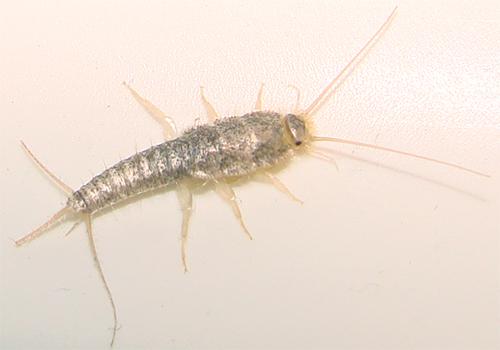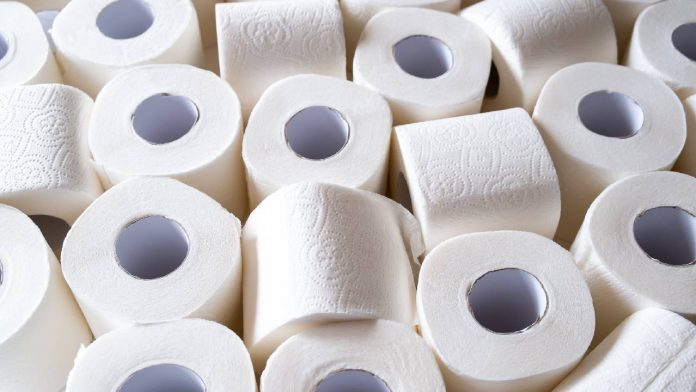You might not want to believe it … but these bugs out there exist who eat paper. I don’t think it’s all so surprising, because the termites go after wood and paper is made from wood fibers.
But what surprised me the most is the kind of paper that they eat. The bugs that I speak of seem to have a fondness for toilet paper. Maybe the softness is easier on their jaws.
For clarification, we’re talking about clean toilet paper. While it is possible that at least one of these bugs must have like the flavored one, considering what kind of bugs are in this list. Uck! I believe we’ll just ignore this one.
The paper eaters that I’m talking about are called silverfish. They’re a silvery insect about 3/4 of an inch long, if you haven’t seen one. When you look more closely, at one end there is a few antennas and at the other end there are some spikes.
Related: 5 Insects You Can Munch On To Survive In The Jungle
In between, you’ll see six legs. They prefer warm environments, such as the bathroom and which may have something to do with their fondness with toilet paper roll.
Naturally, the only book eaters out there aren’t silverfish. Every now and then cockroaches, termites and book lice enjoy a page. So if the edges or your pages or the edges of your TP roll are getting chewed on, don’t assume it’s silverfish, it might be one of these other creepy-crawlies.
Such guys can be a problem for preppers, particularly preppers who keep their stockpile in the basement, as silverfish like toilet paper as well as other papers.
Many cellars are damp, which makes it an ideal environment. Combine it with toilet paper packs on the racks next to the mirror, and it looks like you have just set up a buffet for silverfish.


So, what can we do about this? How can you protect your precious TP?
To continue with, the plastic wrap around the package isn’t going to do a bit of good. They can eat right through that. But having the packages of TP in would probably be a help.
Apparently silverfish like the edges of the sheets, pages or whatever they munch on; so there’s a good chance they would only munch on the edges of the boxes, leaving the content alone … but you never know.
Personally, I think I ‘d like a little more secure storage for my TP collection. After all, that stuff ‘s going to be worth its weight in gold, especially to women, once the SHTF. So it’s worth spending a little money on protecting it.
Related: Toilet Paper Pills – The Best Invention You Didn’t Know You Need
Secure Storage of TP
In addition to securing these precious rolls somewhere in a waterproof bank vault, I have two ways to secure your TP supplies. There is a lot of similarity and one of them works. It depends on the size of rolls to stock.
The first and easiest way is using a PVC tube where you can place your toilet paper. Specifically, I’m referring to the thin-wall 4-inch PVC pipe that’s used for septic systems. Just make sure you buy the kind which isn’t pierced with holes for effluent (liquid) dispersal in a leech field.
Standard rolls of clean paper work in this pipe just fine, but the “double” and “triple” rolls will not be able to fit. Cut your pipes to fill your storage area and fill them in with your paper rolls and cover the two ends.
Therefore, it’s probably worth using PVC pipe adhesive to keep the bugs out, even though it’s water resistant.
The second, slightly more difficult way to securely store your TP collection requires building materials. But you’re not going to be using the normal “consumer” rolls of toilet paper.
You would instead have to buy industrial rolls that are used in factories, offices and school bathrooms.
Related: Things to Wipe Your Ass With in the Woods
These bigger rolls would probably be a better deal, but they may not be as soft. But then, I doubt there will be anyone complaining when this is the only toilet paper around.
You will want to purchase the cardboard tubes for this size roll, which are used in the form for making the base columns. These come in different sizes, so you need to ensure you buy the size that corresponds to your TP rolls; that will probably be the 12-inch size.
With these tubes there are no ends, so you have to cut your own from plywood, particleboard or OSB, whatever you have. Put one at one end, squeeze it in.
Once it dries, fill the tube with as many rolls as it will hole and then put another round cap in the other end, also caulking it in place. Once the caulking dries, it would be a good idea to go around the edges with duct tape, just to ensure a good seal.
A Defensive Perimeter
Yet another alternative to consider is to construct a protective perimeter around it instead of going through the time of filling your TP in all these tubes. It doesn’t have to be a big perimeter, just enough to deal with these little bugs.
However, if you put an unbroken line of diatomaceous earth around your stack of TP packages, making sure that there’s no place they can get through and that there’s no place where the TP packages are touching the wall, you will have constructed an insurmountable obstacle for the silverfish.
Earth with diatoms feels very fuzzy in your fingertips, but it doesn’t feel that way to bugs does not feel that way. It’s just rough edges for them; sharp enough to cut them.
It is possible to kill many other crawlers, not just silverfish. This is a great and natural way to protect your home against bugs and kill the bugs that get inside.





















